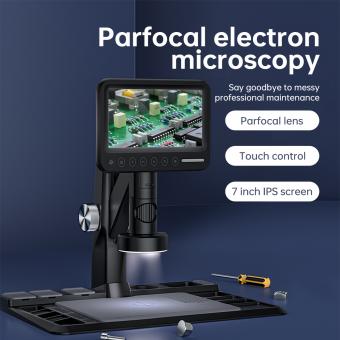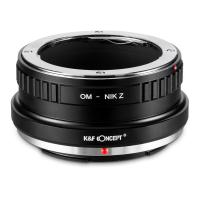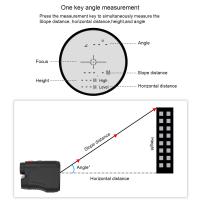How Much Electron Microscope Cost ?
The cost of an electron microscope can vary significantly depending on the type and specifications of the microscope. Generally, electron microscopes are high-end scientific instruments and can be quite expensive. Basic models can start at around $100,000, while more advanced models with additional features and higher resolution can cost several million dollars. Additionally, there are ongoing costs associated with maintenance, operation, and specialized training required to use electron microscopes effectively.
1、 Types of Electron Microscopes and Their Cost Variations
The cost of an electron microscope can vary significantly depending on the type and specifications of the instrument. There are several types of electron microscopes, including transmission electron microscopes (TEM), scanning electron microscopes (SEM), and scanning transmission electron microscopes (STEM). Each type has its own unique features and capabilities, which can affect the price.
A basic SEM can cost anywhere from $30,000 to $500,000, depending on the brand and specifications. These microscopes are commonly used for surface imaging and analysis, and they offer high-resolution images of the sample's surface.
TEMs, on the other hand, are more expensive due to their complex design and higher resolution capabilities. A basic TEM can range from $200,000 to $2 million. These microscopes are used for studying the internal structure of samples and can provide atomic-level resolution.
STEMs combine the capabilities of both SEM and TEM, allowing for high-resolution imaging of both the surface and internal structure of samples. The cost of a STEM can range from $500,000 to $3 million, depending on the specifications.
It is important to note that these prices are approximate and can vary depending on factors such as the brand, model, and additional features. Additionally, the latest advancements in technology and research may lead to higher costs for more advanced electron microscopes.
In conclusion, the cost of an electron microscope can vary greatly depending on the type and specifications. SEMs are generally more affordable, while TEMs and STEMs tend to be more expensive due to their higher resolution capabilities. It is advisable to consult with microscope manufacturers or suppliers to get the most accurate and up-to-date pricing information.
2、 Factors Affecting the Cost of Electron Microscopes
The cost of an electron microscope can vary significantly depending on several factors. These factors include the type of electron microscope, its specifications, and the manufacturer. Additionally, the latest advancements in technology and the demand for specific features can also influence the cost.
There are several types of electron microscopes available in the market, including transmission electron microscopes (TEM), scanning electron microscopes (SEM), and scanning transmission electron microscopes (STEM). Each type has its own set of specifications and capabilities, which can affect the cost. For example, TEMs are generally more expensive than SEMs due to their higher resolution and imaging capabilities.
The specifications of an electron microscope, such as the resolution, magnification range, and imaging modes, can also impact the cost. Higher resolution and larger magnification ranges typically come at a higher price. Additionally, the availability of advanced imaging modes, such as energy-dispersive X-ray spectroscopy (EDS) or electron backscatter diffraction (EBSD), can increase the cost of the microscope.
The manufacturer of the electron microscope also plays a role in determining its cost. Established manufacturers with a reputation for producing high-quality instruments often charge a premium for their products. However, there are also smaller manufacturers or emerging companies that offer more affordable options without compromising on quality.
Lastly, the latest advancements in technology can influence the cost of electron microscopes. As new technologies are developed and integrated into these instruments, the cost may increase. For example, the introduction of aberration-corrected electron microscopy has significantly improved the resolution and image quality, but it has also made these microscopes more expensive.
In conclusion, the cost of an electron microscope can vary depending on factors such as the type of microscope, its specifications, the manufacturer, and the latest technological advancements. It is important for potential buyers to carefully consider their specific needs and budget when selecting an electron microscope.
3、 Price Range for Entry-Level Electron Microscopes
The cost of an electron microscope can vary significantly depending on the type, specifications, and brand. Electron microscopes are highly advanced scientific instruments used for detailed imaging and analysis at the nanoscale level. They are commonly used in research laboratories, universities, and industrial settings.
Entry-level electron microscopes typically range in price from $50,000 to $200,000. These models are often suitable for basic imaging and analysis needs and are commonly used in educational institutions. However, it is important to note that this price range is a general estimate and can vary depending on the specific features and capabilities of the microscope.
It is worth mentioning that the latest advancements in technology have led to the development of more affordable electron microscope options. For instance, there are now compact and portable electron microscopes available at a lower cost compared to traditional models. These portable microscopes offer convenience and ease of use, making them suitable for on-site analysis and fieldwork.
Additionally, some companies offer leasing options for electron microscopes, allowing researchers and institutions to access these advanced instruments without the need for a large upfront investment. This can be particularly beneficial for smaller research groups or institutions with budget constraints.
It is important to consider that along with the initial purchase cost, there are additional expenses associated with electron microscopes. These include maintenance, training, and the cost of consumables such as sample preparation materials.
In conclusion, the cost of an entry-level electron microscope typically ranges from $50,000 to $200,000. However, advancements in technology have led to the availability of more affordable options, including portable microscopes. Leasing options are also available for those with budget constraints. It is essential to consider the additional expenses associated with electron microscopes when budgeting for these instruments.
4、 Advanced Electron Microscopes and Their Higher Price Points
The cost of an electron microscope can vary significantly depending on the type and specifications of the instrument. Electron microscopes are highly advanced scientific tools that utilize a beam of electrons to magnify and analyze samples at extremely high resolutions. These instruments are crucial in various fields such as materials science, nanotechnology, biology, and medicine.
Basic transmission electron microscopes (TEMs) can range in price from $200,000 to $1 million, while scanning electron microscopes (SEMs) can cost between $50,000 and $700,000. These price ranges are for entry-level models and do not include additional accessories or upgrades.
However, advanced electron microscopes with higher performance capabilities can have significantly higher price points. These cutting-edge instruments often incorporate advanced features such as aberration correction, high-resolution imaging, and advanced analytical capabilities. The latest generation of electron microscopes, such as aberration-corrected TEMs and focused ion beam scanning electron microscopes (FIB-SEMs), can cost several million dollars.
The higher price points of advanced electron microscopes can be attributed to several factors. Firstly, the development and manufacturing of these instruments require highly specialized expertise and precision engineering. Additionally, the incorporation of advanced technologies and components, such as aberration correctors and high-performance detectors, significantly adds to the cost. Moreover, the demand for these instruments is relatively low compared to other scientific equipment, which further contributes to their higher price tags.
It is important to note that the cost of electron microscopes is not solely determined by the instrument itself. Additional expenses such as installation, training, maintenance, and ongoing support should also be considered when budgeting for an electron microscope.
As technology continues to advance, the cost of electron microscopes may decrease over time. However, the latest point of view suggests that the demand for higher performance and more advanced capabilities may offset any potential decrease in price. Researchers and institutions are constantly pushing the boundaries of scientific exploration, requiring more sophisticated tools to meet their needs. Therefore, while the cost of electron microscopes may vary, their importance and value in scientific research cannot be understated.



































